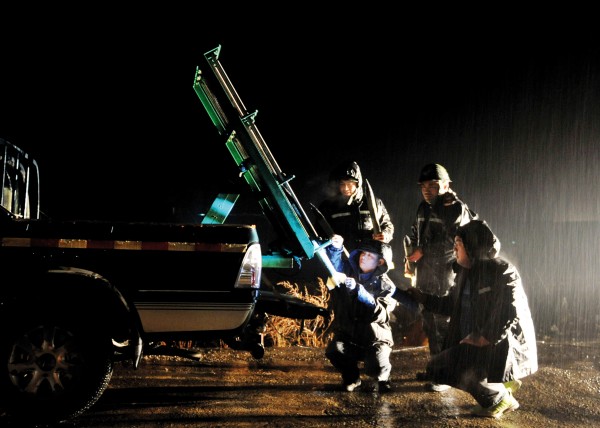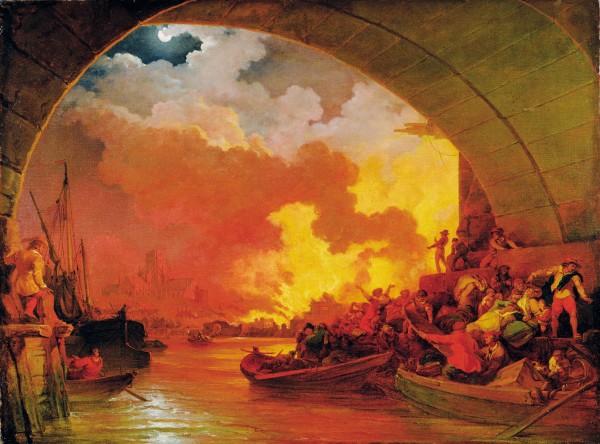Tropical cyclones
For the second time in less than two years, a tropical cyclone has hammered Western Samoa. In February 1990 tropical cyclone Ofa killed seven people and caused $300 million damage to this island nation of 160,000 people. The island had not fully recovered when cyclone Val struck in December last year, killing 12 people and causing damage estimated at $535 million.
Val is estimated to have had winds up to 170 kilometres per hour and gusting to 240 kilometres per hour. On Savail, hardest hit of the two larger islands, 95 per cent of the houses were reported wrecked, and 90 per cent of the foliage stripped from the trees. Fearful for their lives, people smashed their way into concrete water tanks to find shelter. One fishing boat was wrecked within sight of land, and its three Australian crew were drowned.
In some coastal areas the sea was driven up on to the land by a combination of the extreme winds and the intensity of the low pressure, which was estimated to be 935hPa at the cyclone centre. Damage was worse this time because Val became slow-moving for about 24 hours just south of Samoa, greatly prolonging the period of destruction.
Problems did not end once Val moved away. Lack of food, clean water and shelter caused disease and illness. Longer term problems include the pollination of plants. This task is normally accomplished by fruit bats, but more than 90 per cent of them are thought to have been killed or blown away.
What is a tropical cyclone? It is a revolving storm, about half the size of a mid-latitude depression of the sort we experience in New Zealand, but with a pressure gradient about ten times stronger. If you drew the isobars around a tropical cyclone on a normal map they would be so close together near the centre that they would touch, leaving just a blob of black ink on the page.
Tropical cyclones have a warm core containing a narrow belt of extreme winds surrounding a small eye where the winds are much lighter and the skies may be clear.
They form over warm tropical oceans, usually in the summer half of the year, although in the Northwest Pacific they can form at any time of the year. In the South Pacific the tropical cyclone season is from November to April, though occasionally one forms a month or so outside this range. The average is about nine per season, but there have been as many as 16.
The sea surface temperature has to be higher than about 26°C for a tropical cyclone to form, which is why there are none over the South Atlantic, nor over the part of the South Pacific near South America, where there are cold ocean currents.
The high sea temperature is necessary to supply the heat to drive tropical cyclones, both through sensible heat as well as the heat released when water vapour condenses to liquid.
Cyclones must rotate in order to grow, and they derive some of this rotation from the spin of the Earth. But they can only do this in an environment where a change in latitude corresponds to a significant change in distance from the Earth’s axis of rotation. This only happens beyond about four degrees of latitude from the equator, which explains why cyclones do not form at the equator.
Another essential ingredient is an anticyclone in the upper atmosphere to organise the outflow of air away from the area above the cyclone core—a bit like a high altitude vacuum cleaner. This outflow shows up on satellite pictures as an immense arc of cloud stretching thousands of kilometres away from the cyclone.
The seed around which tropical cyclones grow is a group of particularly active thunderstorms. Over the Pacific Ocean, thunderstorms are usually found lying in broad bands along the Inter-Tropical Convergence Zone or the South Pacific Convergence Zone. These are places where the trade winds converge, and these winds also help to provide some of the spin or vorticity needed for tropical cyclone growth.
Once formed, tropical cyclones gradually move away from the tropics. In the eastern South Pacific they often move southeastwards, but those that form in the western South Pacific and closer to the equator usually move southwest to begin with, and then may recurve and move southeast. Picking the time and place of this change of direction is a major forecasting challenge.
Often tropical cyclones accelerate as they move away from the tropics, but occasionally, when blocked by an anticyclone, they may slow to a crawl. If they move over a large land mass such as Australia they will weaken considerably within 24 hours due to the lack of water vapour being fed in at the base, and also the effect of increased friction over land.
Even if they stay over the ocean, they change their structure from that of a tropical cyclone to that of a mid-latitude depression due to cooler sea surface temperatures diminishing the input of heat and moisture. Often they weaken as this happens, but in a small number of cases they will redevelop into a very deep depression capable of causing extensive flooding and wind damage, as tropical cyclone Bola did in Gisborne in March 1988, or the low that sank the Wahine at the entrance to Wellington Harbour did in April 1968.
Even when there is no redevelopment into a deep depression, the large amounts of tropical air that tropical cyclones move poleward can bring heavy rain to parts of New Zealand, as the remains of tropical cyclone Betsy did in January of this year.
Although the occurrence of a tropical cyclone at any one location is a relatively infrequent, albeit dramatic, event, the number of tropical cyclones worldwide is remarkably constant at about 80 per year. It is of great interest whether this number will change should the predictions of global warming come true in the next century. The consensus at present is that although the number of tropical cyclones worldwide may well stay at about the same level as now, there is likely to be an increase in the number of those that reach the very intense and destructive stage.
For island nations with fragile economies and limited resources, this is gloomy news indeed.

















